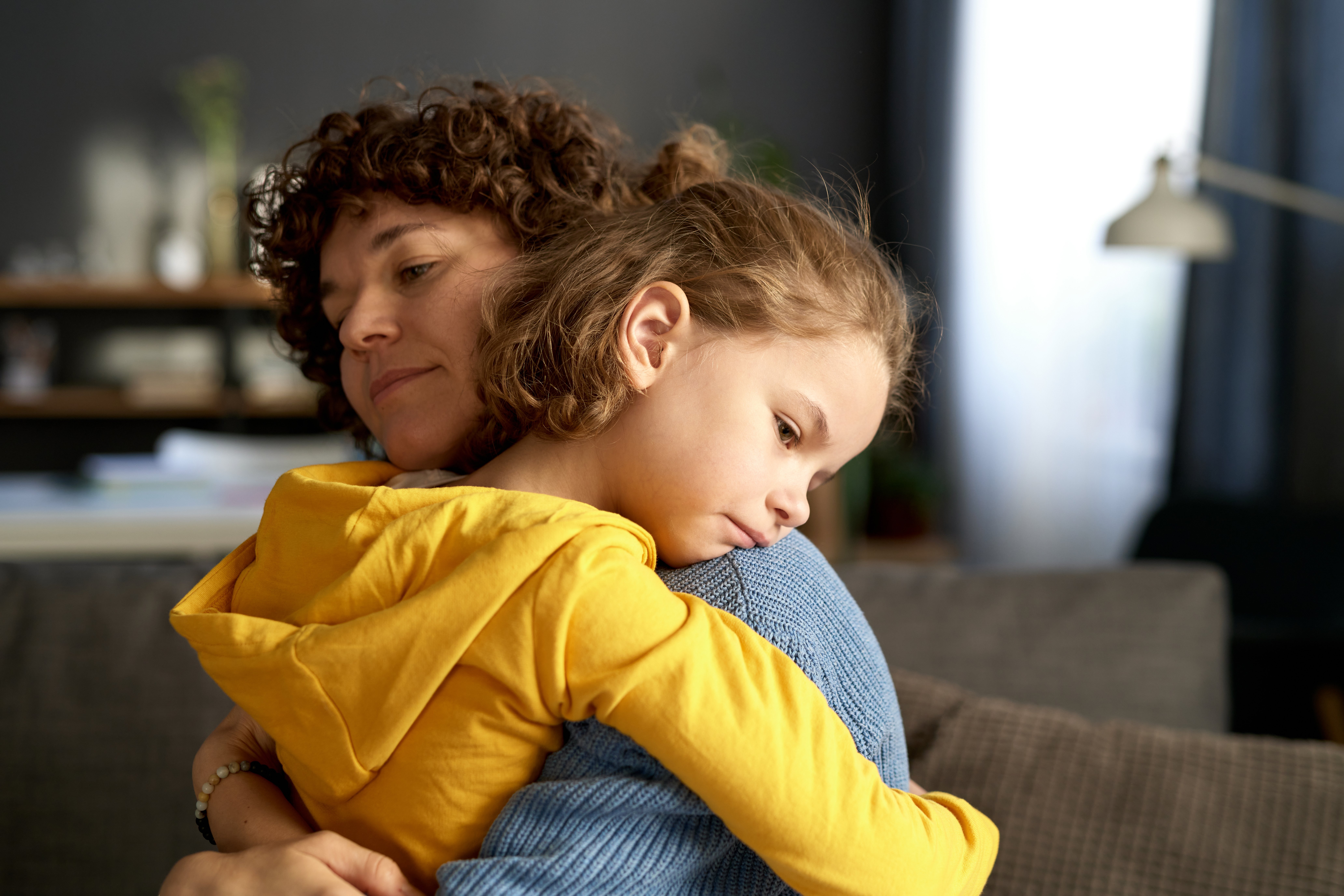How to Talk to Children About Fear: Stories That Inspire Courage
16 iulie 2025
Fear is part of every child’s life. It might be fear of the unknown, of failure, of making mistakes, of being ridiculed or rejected. All of these are natural emotions. When a child doesn’t know how to name or express them, fear can become a barrier to play, learning, and relationships. But how can we talk to children about fear in a way that doesn’t overwhelm them?
The answer is simple and gentle: through stories.
About Fear – Understanding It as Parents, So We Can Truly Listen
Fear isn’t a flaw, but a healthy part of a child’s development. It’s a natural protection mechanism that helps them adapt and stay safe. At a young age, when they don’t yet have the right words, children express fear through strong reactions – they may run away, cry, hide, or scream. They’re not exaggerating, they’re communicating in their own way: they need to be seen, understood, and supported.
As parents, it’s natural to want to protect children from discomfort. When we see them scared, our instinct is often to reassure them quickly: “It’s nothing!”, “It’s over!”, “You’re okay.” We do this out of care and a desire to restore their sense of safety.
But fear doesn’t go away just because we tell it to. On the contrary, it can grow if it’s not acknowledged. When we meet it with understanding and patience, the child learns that it’s okay to feel – and that they’re not alone in their emotions.
Fear is the Beginning of a Story About Courage
For children, fear is a signal that they’re in a new, unfamiliar, or unexplored space. They don’t yet have the internal references that tell them, “That’s just a shadow,” or “A mistake is just a step toward learning.”
That’s why they need a calm and confident adult nearby – someone who communicates through gestures and words: “I’m here. I understand. You’re safe.” When children feel understood, they start to build courage and turn the unknown into something friendly.
Fear doesn’t need to be rejected. It needs to be understood.
What Happens in a Child’s Body When They’re Scared
When a child perceives danger (real or imagined), their body switches into “protection mode”: the heart beats faster, breathing becomes quicker, muscles tense up. In those moments, their brain can’t process logic or explanations – it needs, above all, emotional regulation: the warm presence of an adult who soothes them with calm, eye contact, and a gentle voice.
The tone of our voice, the rhythm of our breathing, the expression on our face – all convey safety.
The child “tunes in” to our calmness and gradually learns to regulate themselves.
In this process, personalized stories play a valuable role: they offer the child a familiar space, with a character that shares their name and similar emotions. When the child listens to “their” story in a safe, recognizable world, their bodily reactions begin to settle. Identifying with the hero and emotional cues builds a bridge between fear and courage, between tension and calm.
How Do We Talk to Children About Fear?
We start by not talking over fear, but with it. We don’t try to correct it, but to meet it.
We can say:
“I see you’re feeling scared. I’m here with you.”
“It’s okay to feel fear. Everyone feels that way sometimes.
“Let’s sit with the fear for a bit and see what it wants to tell us.”
At the same time, we don’t need to amplify it or get lost in it. We just normalize it:
“Fear shows us that something matters to us. It’s not our enemy.”
Why Do Stories Work?
Children process emotions through play, symbols, and identification. A story where the character goes through a similar fear, acknowledges it, and learns to manage it step by step becomes an emotional mirror. If the character also shares the child’s name and age, the effect is even stronger.
Personalized audio stories aren’t just fun – they become a shared language that lets children and parents talk about feelings without pressure
Story Ideas That Help Children Understand Fear
Fear of failure – “The Slow Little Frog’s Race”
A little frog enters a race where others seem faster, more confident, more “prepared.” At first, the fear of failure holds her back. But as she continues, she discovers that every step counts, and that effort and involvement bring satisfaction, even without finishing first.
The child learns that it’s okay to make mistakes, to not always be first, and that true courage lies in trying – not in succeeding perfectly.
Fear of the unknown – “First Day in the Forest School”
A bear cub goes to “forest school” for the first time and doesn’t know anyone. The unfamiliar setting scares him, but gradually, with the help of a friend and a shared adventure, he finds the courage to explore.
Through this story, the child learns that the unknown can become a friendly place, discovered step by step.
Fear of speaking in front of others – “The Little Dragon and the Words That Burn”
The red dragon is afraid to speak after blurting out a word that brought him shame. Over time, he learns that emotions shouldn’t be hidden but can be expressed openly, from the heart.
The child understands that with honest communication and courage, the fear of being judged can be softened.
Fear of being alone – “The Little Bear Waiting in the Snow”
When the parents are late, the little bear is flooded with emotions and thoughts that unsettle him. But with the help of a magical snowflake, he learns to calm his fear and trust in his own ability to self-soothe.
Through this story, the child discovers that being alone doesn't mean being abandoned – it's a chance to learn emotional resilience
Simple Activities After Listening to the Story
Shadow Theater with Fear and Courage
Use a flashlight and toys or cut-out silhouettes to create shadows on the wall. Invite the child to invent a short story where the shadows represent fear and courage. As the story progresses, show how the “fear” shadows transform or disappear when courage appears.
This activity stimulates imagination and helps the child explore emotions creatively and non-verbally, making fear feel less intimidating.
“Courage Grows” Game
Draw a ladder on a sheet of paper. Each step represents a small act of courage the child can take (e.g., saying how they feel, asking for help, trying something new). This turns the emotional process into a visual and motivating game.
Map of Fear and Courage
Draw an imaginary map together: one corner is the “Land of Fear,” another is the “Country of Courage.” In between are intermediate places – “Forest of Doubt,” “Bridge of Challenges,” “Lake of Breathing.”
The child can draw obstacles and resources (e.g., a magic wand = a kind word, a rock = a tough emotion). Then narrate how the character (or the child) might travel from fear to courage. This helps children visualize the emotional journey as an adventure with concrete steps and support along the way
Fear Is Not a Wall – It’s a Door to Courage
When we talk to children about fear with patience and empathy, we don’t just give them explanations – we give them a mirror in which they can recognize themselves and feel reassured.
Stories become bridges between their inner world and our adult world. Through them, fear transforms from something heavy into a feeling that can be felt, named, and carried forward — in small, safe steps.
It’s not about eliminating fear – it’s about showing the child that they don’t have to face it alone.
And sometimes, a character who’s just as scared as they are is all it takes for them to find their courage again.
For personalized stories that help little ones understand and manage their fears, try Povelia.com — a place where stories come to life for your child.
Încearcă acum o poveste audio personalizată!
Cu Povelia, poți crea o ocazie unică de apropiere și comunicare cu cel mic, în care să uitați de stres, griji sau ecranele telefoanelor.

Ultimele articole
Intră în comunitatea de părinți care
au ales Povelia pentru copiii lor
Abonează-te la newsletter și primești instant 2 povești extra în cont pentru mai multe momente speciale petrecute cu copilul tău, plus sfaturi pentru dezvoltarea sa personală.





